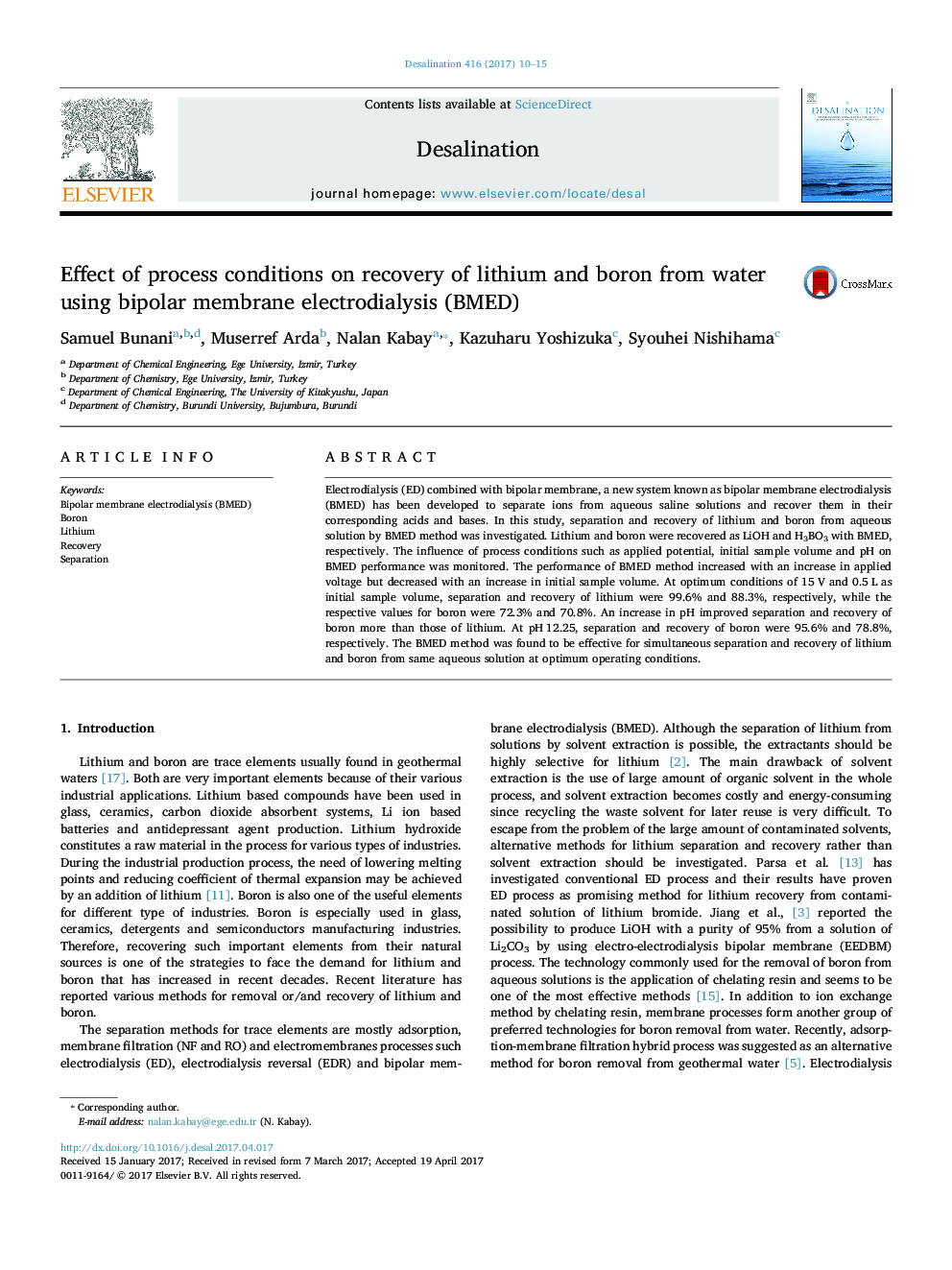| Article ID | Journal | Published Year | Pages | File Type |
|---|---|---|---|---|
| 4987705 | Desalination | 2017 | 6 Pages |
Abstract
Electrodialysis (ED) combined with bipolar membrane, a new system known as bipolar membrane electrodialysis (BMED) has been developed to separate ions from aqueous saline solutions and recover them in their corresponding acids and bases. In this study, separation and recovery of lithium and boron from aqueous solution by BMED method was investigated. Lithium and boron were recovered as LiOH and H3BO3 with BMED, respectively. The influence of process conditions such as applied potential, initial sample volume and pH on BMED performance was monitored. The performance of BMED method increased with an increase in applied voltage but decreased with an increase in initial sample volume. At optimum conditions of 15Â V and 0.5Â L as initial sample volume, separation and recovery of lithium were 99.6% and 88.3%, respectively, while the respective values for boron were 72.3% and 70.8%. An increase in pH improved separation and recovery of boron more than those of lithium. At pHÂ 12.25, separation and recovery of boron were 95.6% and 78.8%, respectively. The BMED method was found to be effective for simultaneous separation and recovery of lithium and boron from same aqueous solution at optimum operating conditions.
Keywords
Related Topics
Physical Sciences and Engineering
Chemical Engineering
Filtration and Separation
Authors
Samuel Bunani, Muserref Arda, Nalan Kabay, Kazuharu Yoshizuka, Syouhei Nishihama,
